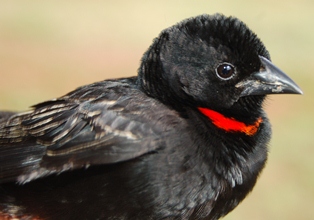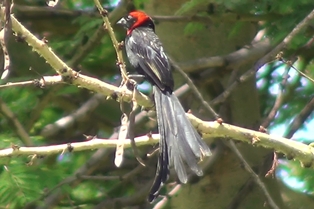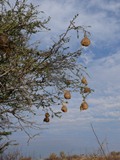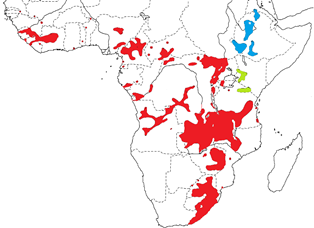Weaver news
  The Red-collared Widowbird Euplectes ardens is a widespread widowbird in Africa, being found from Senegal across to Ethiopia and south to eastern South Africa in the localities shown on the map below (based on Birds of Africa). It occurs in a variety of habitats including grassland, rank vegetation, cultivated areas, and slopes with sparse trees.
The adult male in breeding plumage (above left) is black, often with a red collar or head, and a long tail. Females (below) and non-breeding males are dull coloured, with a yellowish eye-stripe and yellowish or buffy breast sharply demarcated from the white belly. Many subspecies have been recorded. Currently accepted subspecies are:
The highland laticauda and suahelicus are isolated from the Iowland birds and from each other, and may be separate species. Molecular studies indicate that the Red-collared Widowbird is a bishop with a long tail, rather than a widow. The Red-collared Widowbird feeds on seeds, insects including termites, nectar. It forages on the ground, often in flocks of 200 birds or more.
This species is polygynous and territorial. Males with longer tails attract more females and males with larger red collars held larger territories. Males prefer hillsides, where they can glide downhillfor display flights. The nest is an oval structure with a side entrance, built by the male and lined and strengthened by the female. A male may have 3-22 nest structures placed in tall grass, on his territory. The eggs are grey or blue-green and heavily speckled with brown, often forming ring near the thick end (see photo at phown 2411). There is one PHOWN record for this species, and a news item described this record from Nairobi (phown 2411). Many more records are needed of this common species, although nests are well hidden. Submit any weaver nest records to PHOWN (PHOtos of Weaver Nests) via the Virtual Museum upload site. More photos of this species may be viewed at Birdpix. PHOWN summary Previous Wedn: Kilombero Weaver Full weaver species list |












